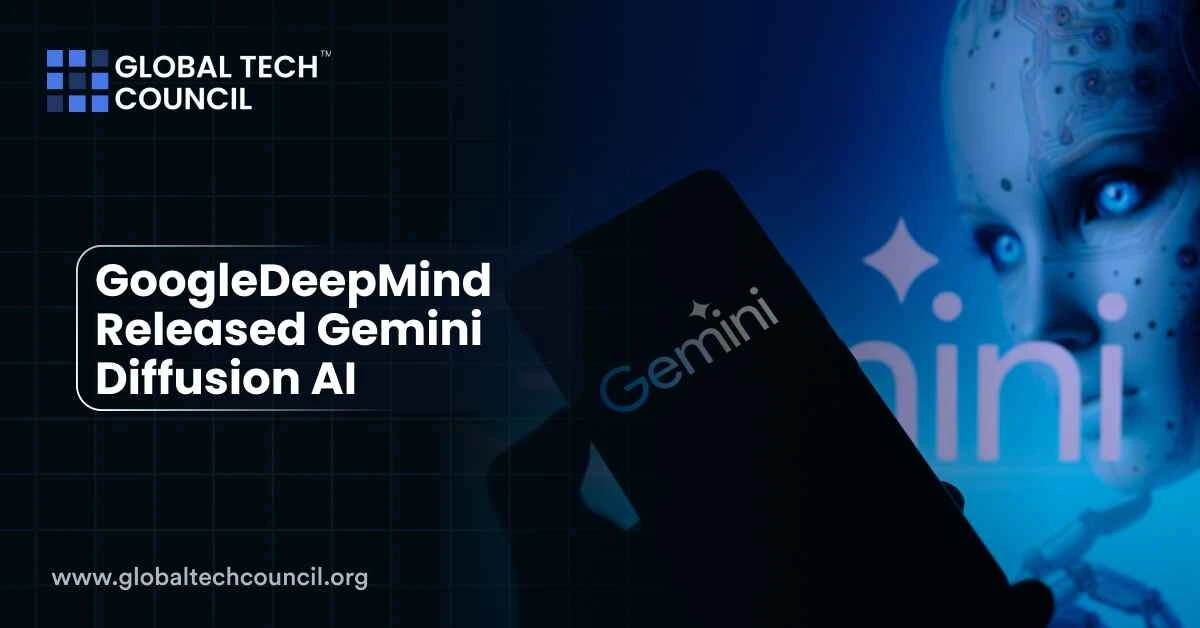
GoogleDeepMind has launched Gemini Diffusion AI — a new type of AI model that writes text in a totally different way. Instead of building sentences word-by-word like ChatGPT or Claude, it starts with noise and gradually turns that into coherent content. It’s similar to how Stable Diffusion creates images but now applied to text.
The result? Faster generation, smoother responses, and a new way to create AI-generated content that could change how we interact with language models.
What is Gemini Diffusion?
Gemini Diffusion is an experimental large language model developed by GoogleDeepMind. It uses a “diffusion” approach, which is commonly seen in AI image generators. Instead of predicting the next word step by step, it refines noisy data into fully formed sentences.
This means it doesn’t just think forward — it thinks holistically, which leads to faster and more natural outputs.
Why Gemini Diffusion Matters
Current LLMs like GPT-4 or Claude are powerful but slow, especially with long outputs. Gemini Diffusion tackles this with higher speed and stronger contextual understanding.
It’s still in its testing phase, but early demos have shown:
- Much faster token generation (up to 1,479 tokens/second)
- More coherent and structured outputs
- Less repetition in longer texts
- Easier scaling for apps that need fast response times
Key Features of Gemini Diffusion
Gemini Diffusion introduces several innovations that improve how language models generate content.
| Feature | What It Does |
| Diffusion-Based Text Creation | Turns noise into coherent text instead of using next-word prediction |
| Faster Generation | Speeds up token output for real-time use cases |
| Higher Coherence | Keeps context better across long answers or stories |
| Multimodal Ready | Designed to potentially work with images and code too |
| Experimental Access | Limited availability via waitlist on DeepMind platforms |
Gemini Diffusion vs Other LLMs
This new model offers clear improvements over current popular LLMs when it comes to speed and output quality.
| Model | Method | Speed (tokens/sec) | Strengths |
| Gemini Diffusion | Diffusion-based | 1,479 | Speed, coherence, efficiency |
| GPT-4 | Autoregressive | ~500 | Logic, reasoning, broad usage |
| Claude 3 | Autoregressive | ~600 | Alignment, safety, dialogue flow |
| LLaMA 3 | Autoregressive | ~700 | Open-source, fine-tuning control |
Use Cases and Real-World Potential
Gemini Diffusion could be applied to many fields. With its speed and quality, it fits well into areas that need fast, high-volume content or smarter dialogue systems.
Real-Time Assistants
- Better live chat support for businesses
- Interactive AI avatars for websites or games
Education
- Fast explanations for complex topics
- Real-time tutoring help during online lessons
Content Creation
- Drafting blogs, marketing copy, or video scripts
- Converting outlines into polished articles instantly
Coding
- Could soon support structured code generation
- Useful for dev tools, IDEs, and low-code platforms
Future Outlook and Ecosystem Fit
Gemini Diffusion is being tested alongside Gemini 1.5 Pro, which already supports multimodal input. If integrated well, it could become a foundational part of Google’s larger ecosystem — including Search, Chrome, and Workspace.
For professionals in AI, marketing, or software development, now is a great time to explore how these systems work. Enrolling in a Deep Tech certification helps break down the technical ideas behind models like Gemini Diffusion.
And for those building apps with AI-driven content or insights, a Data Science Certification or Marketing and Business Certification can make adoption easier and more strategic.
Final Thoughts
Gemini Diffusion isn’t just another large language model. It’s a fresh direction — using AI concepts from image generation and applying them to language. Faster outputs, smarter structures, and more natural content all make it stand out.
As GoogleDeepMind continues refining this model, we’re likely to see it become a powerful addition to the tools creators, businesses, and developers use every day.